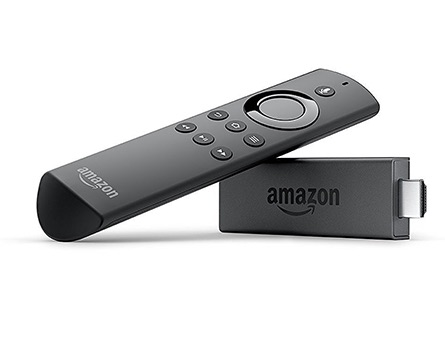Streaming Into the Holiday Season

Two major players in the streaming-device sector—Roku and Amazon— are already gearing up for the all-important holiday buying season. Roku made the biggest shift as it revamped its product lineup alongside a new branding and naming convention, while Amazon added more pop to its streaming stick.
Both companies are expanding or enhancing products as consumers start to think about what to buy next to suit their streaming needs against a competitive OTT streaming device landscape that also includes the new apps-friendly Apple TV, as well as Google’s latest line of Chromecast adapters and a growing mix of boxes that run on its Android TV platform.
According to Parks Associates, Roku was the top-selling streaming media player in 2015, accounting for 30% of units purchased. A new comScore study has found that Roku has an even greater lead, with almost half of the OTT device streaming market.
IHS Technology said it expects 14 million streaming devices to ship this year, with that figure growing to 20.4 million units in 2020.
Amazon last week introduced a new, more powerful Fire TV Stick version with an integrated voice remote powered by its Alexa platform. The new device can search for shows across more than 90 apps or channels and includes 802.11ac MIMO WiFi, the ability to stream video at up to 1080p in resolution and bandwidth-saving HEVC encoding, the company said.
Amazon’s latest addition, which complements its 4K-capable Fire TV box and bakes in a quad-core processor that is about 30% faster than its predecessor, sells for $39.99. To drive in more value, Amazon’s also throwing in $65 in free content— a month of Sling TV, two months of Hulu (its hybrid subscription/ad tier), and a $10 credit for rentals from the company’s own Amazon Video service—to buyers who jump in by Oct. 31.
Amazon has also teed up a free software update coming later this year that offers a new, “cinematic” on-screen experience featuring video trailers and screenshots that will help users navigate and find content, it said. The revised UI will also let users customize which apps show up on the home screen.
Broadcasting & Cable Newsletter
The smarter way to stay on top of broadcasting and cable industry. Sign up below
ROKU REVAMP
Looking to appeal to a wide range of consumer segments, Roku’s new lineup is now comprised of pricing and device options that run the gamut from relatively inexpensive entry-level devices to more-advanced models that support 4K, HDR and other bells and whistles.
Roku Express: The $29.99 device for TVs with an HDMI connector is about 75% smaller but doubles the processing power of the product it’s replacing and supports 1080p video, WiFi (802.11b/g/n), Roku’s mobile app and an IR remote. Notably, Roku is now providing its private listening feature (integrated with the remote control) across its product line.
Roku Express+: This $39.99 version includes composite connectors for older TVs.
Roku Streaming Stick: This device is the model Roku introduced in April. Its price remains unchanged at $49.99.
Roku Premiere: Supports 4K plus an IR-based remote and costs $79.99. It’s about 40% smaller than the 4K-capable Roku 4 that was introduced last fall, and includes a new quad-core processor, 802.11ac dual-band WiFi with MIMO and removes the fan that was part of the Roku 4. The device also supplies access to Roku’s 4K spotlight channel.
Roku Premiere+: Includes the features of Premiere, but adds support for HDR, RF-based remote with a headphone jack, a microSD card slot for added storage, and Ethernet for wired connectivity. Sells for $99.99.
Roku Ultra: At $129, the Ultra is Roku’s fully loaded option, tacking on a voice-capable remote, headphone jack, gaming buttons, an audio optical out port (to connect to a receiver or soundbar), a USB port for local media playback and a lost remote finder feature.
All of Roku’s new 4K-capable players also feature a dynamic, night listening mode that will dampen the sounds of loud noises.
Roku’s players complement integrated Roku TVs from makers such as Hisense, TCL, Sharp, Haier, Insignia (Best Buy) and Hitachi.
Roku devices were used to stream about 4 billion hours of content in the first half of 2016, compared with 5.5 billion hours in all of 2015, Lloyd Klarke, Roku’s director of product management. said. “It’s a monumental time for television,” he said.
Privately held Roku has said it had about $300 million in revenues in 2015, a figure that includes player sales, licensing and advertising. Roku has about 10.6 million active accounts, meaning that they have done some streaming in the last 30 days.










